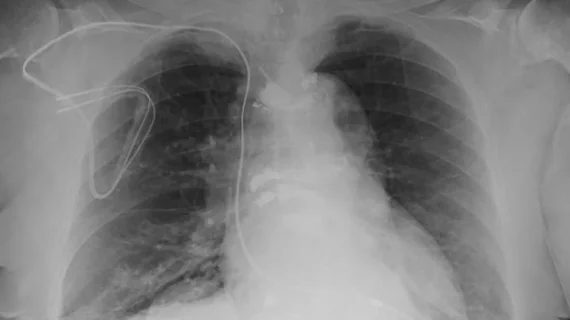Improving the diagnostic value of portable imaging: Experts propose 3 interventions
A recent analysis revealed that portable chest radiographs frequently lack image quality of diagnostic value, particularly during night shifts.
Poor image quality can result in diagnostic errors, including misdiagnosis. Experts at Stony Brook University Hospital in New York, where the internal investigation took place, sought to get a better understanding of what factors might impact image integrity, as well as whether certain interventions could improve error rates.
After evaluating 500 portable chest x-rays (PCXR) completed between July 12, 2021, and July 25, 2021, it was revealed that 46.2% of the images obtained were problematic, requiring the imaging to be repeated. Nearly half (48%) of the films were acquired during the night shift—an occurrence that prompted those involved in the analysis to further examine the support, or lack thereof, available to techs working night shifts [1].
A focus group of six different technologist managers was devised to discuss some of the key issues technologists encounter when performing portable radiographs during these shifts.
This group shared that a common dilemma for many techs is that they simply lack the physical strength required to position some patients, especially patients who are overweight and/or unable to assist with their positioning. This was especially frequent in ICU settings.
Additionally, many technologists lacked familiarity with certain ICU medical devices—endotracheal and IV tubes, EKG wires and other ICU machinery. In turn, many exams were deemed uninterpretable due to such devices overlying patient anatomy.
“When certain machines, medical devices, and wires interfered with their ability to capture images, technologists were often unsure about how each of the medical devices could be moved appropriately,” corresponding author of the paper Michael X. Jin, and colleagues shared, adding that many institutions do not permit techs to manipulate these devices in the first place.
Technologists’ experience level was also found to impact their approaches when imaging patients with different conditions, physical capabilities and body habitus.
“After the focus group, it was clear that more resources and support need to be allocated to the technologists so that they are better trained and supported in an increasingly demanding environment,” the authors wrote.
Following the discussion, three initiatives were implemented in an attempt to lower the quality failure rate of PCXRs.
Providing educational resources. Technologists are provided with additional curriculum involving didactic sessions that provide strategies to improve positioning and techniques.
Nursing staff assistance. When available, nurses can help technologists by assisting in moving patients and medical devices as needed.
Feeback opportunities. Internal medicine residents review imaging and verify whether it is of diagnostic value at the time of image acquisition, before sending the exam for radiologist interpretation.
There is currently no post-intervention data available, but it is anticipated in the future to measure the effectiveness of the proposed initiatives.
The detailed analysis is available in Cureus.

